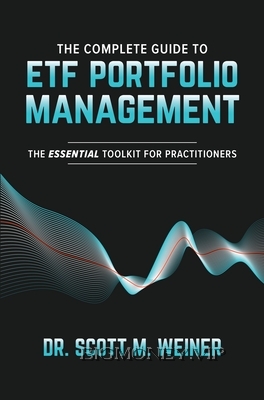The Complete Guide to Etf Portfolio Management: The Essential Toolkit for Practitioners by Scott Weine

PART I
The ETF Industry
sk a professional athlete how to play his or her sport, and you’re likely
to get a description of the playing field and maybe even a bit of history
before you get to the nuts and bolts of skill and strategy. In that vein, we
begin our journey into exchange-traded fund (ETF) portfolio management
by describing the environment in which the practice takes place before
reviewing the act of portfolio management itself. The incredible rise of the
ETF industry has its roots in the regulatory environment of the early 1990s.
In Chapter 1, we provide an overview of that environment along with the
growth narrative of the product in the ensuing decades. In Chapter 2, we
provide an overview of the ETF ecosystem with a clear focus on how the
ETF portfolio manager fits within the framework.
CHAPTER 1
Birth of an ETF
Industries evolve through disruption and innovation. In some industries, it
is hard to pinpoint when that disruption occurs; in others, there is a
watershed moment that permanently changes the landscape. In some cases,
that moment may not even be known at the time, but only through the lens
of history does it become clear. Startups are laser-focused on disruption and
innovation, desperate to be the company that upends the status quo.
Business schools teach disruption and innovation, hoping to instill vision in
future leaders to find those areas of an industry ripe for attack. Examples of
disrupted industries where innovation changed the nature of the industry are
virtually everywhere, from digital cameras displacing film-based products
to liquid soap pushing out bar soap to take top spot in the personal hygiene
market.
Putting aside the innovations that drove these new industries, what is
striking about disruption and innovation is how disruption-proof the
industries appear at the time they get disrupted. Take the mobile phone
market (which, of course, disrupted the communications industry). In 2007,
the cell phone hardware market was dominated by Nokia “brick” phones (a
53% market share), and mobile operating systems were also dominated by
Nokia through its Symbian operating system (a 67% share). Nokia was the
cell phone Goliath. The company had over a billion customers in 2007;
Forbes magazine had dubbed Nokia, the “Cell Phone King”;1
the company,
and its industry, appeared virtually untouchable.
But that year, Apple recognized the value in integrating a software
platform (think “apps”) with the hardware to access it (think “iPhone”), and
a new paradigm in cell phones emerged, one that led to competition
between the Android platform and iPhone’s iOS platform. Cell phones were




